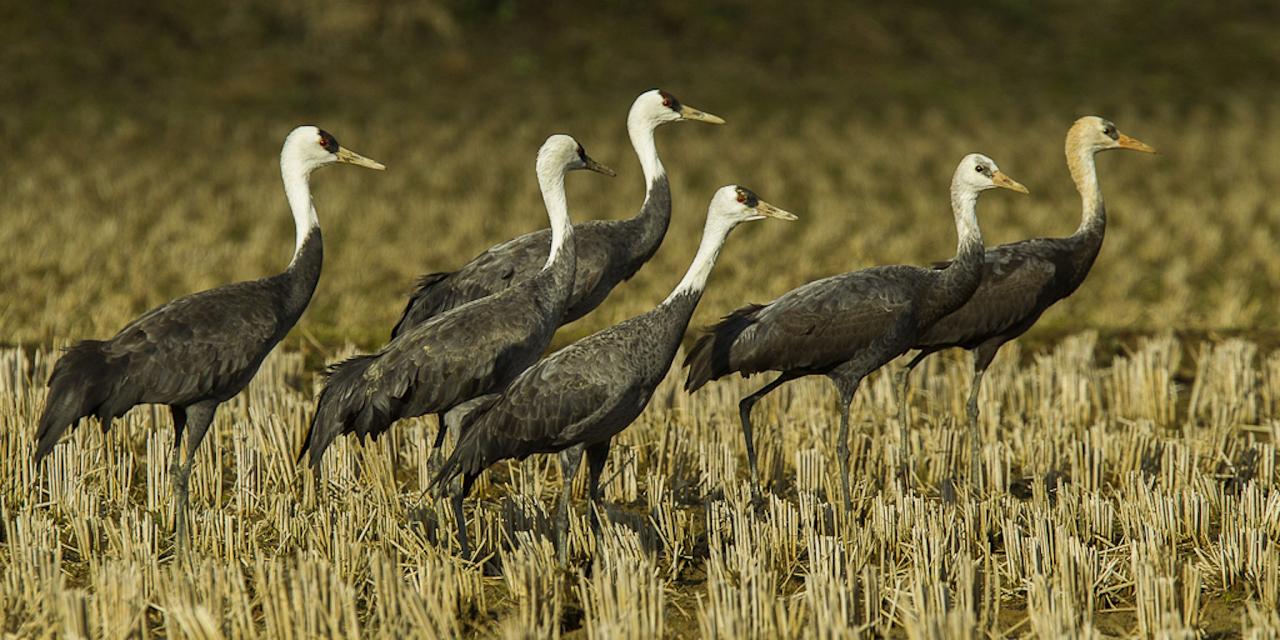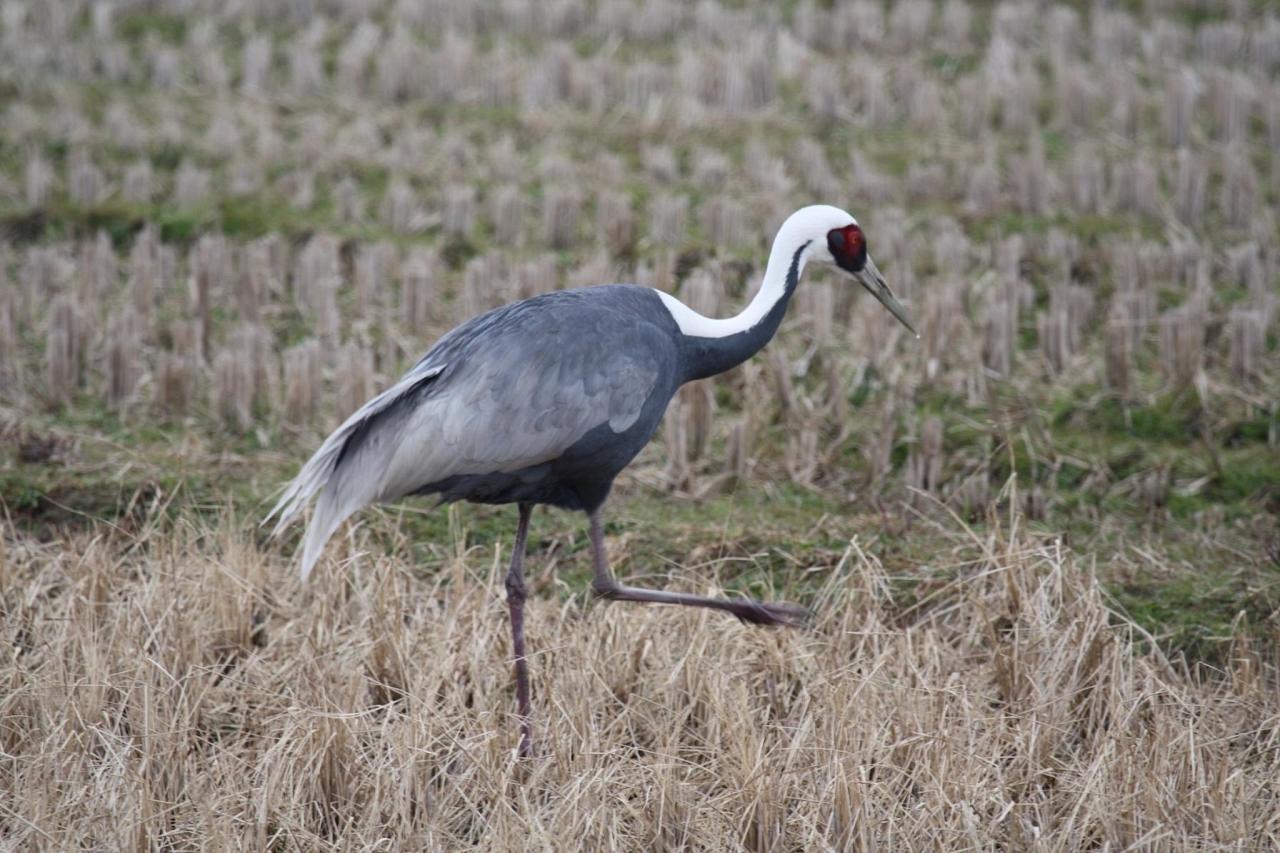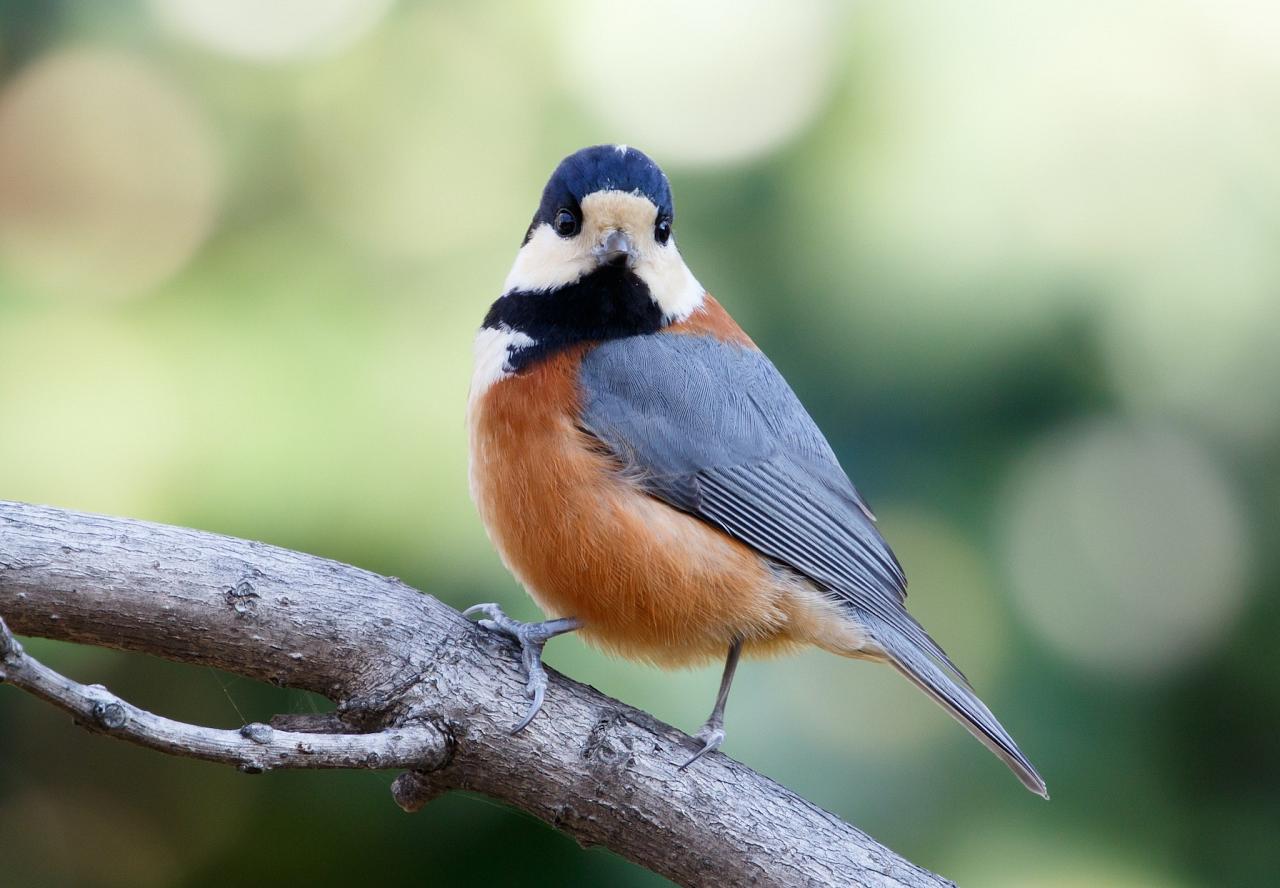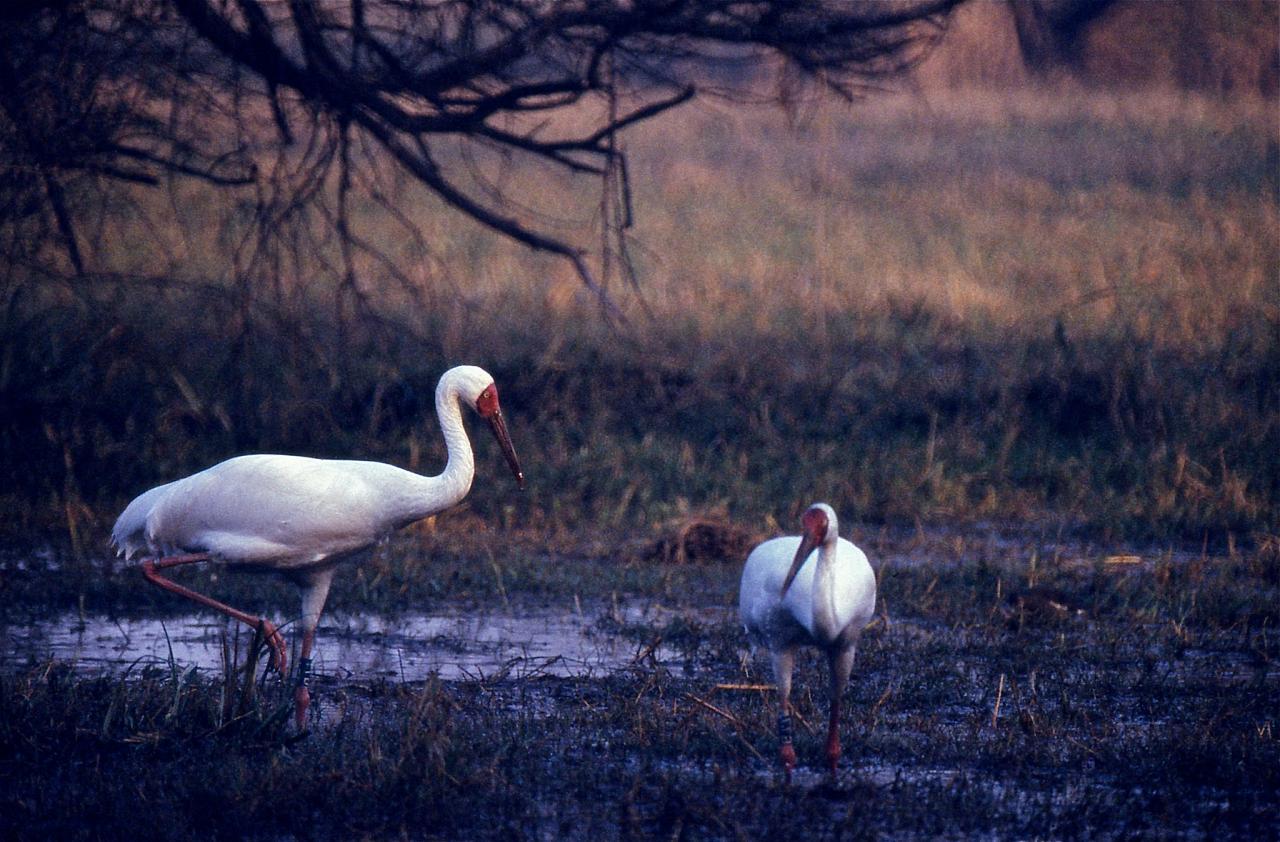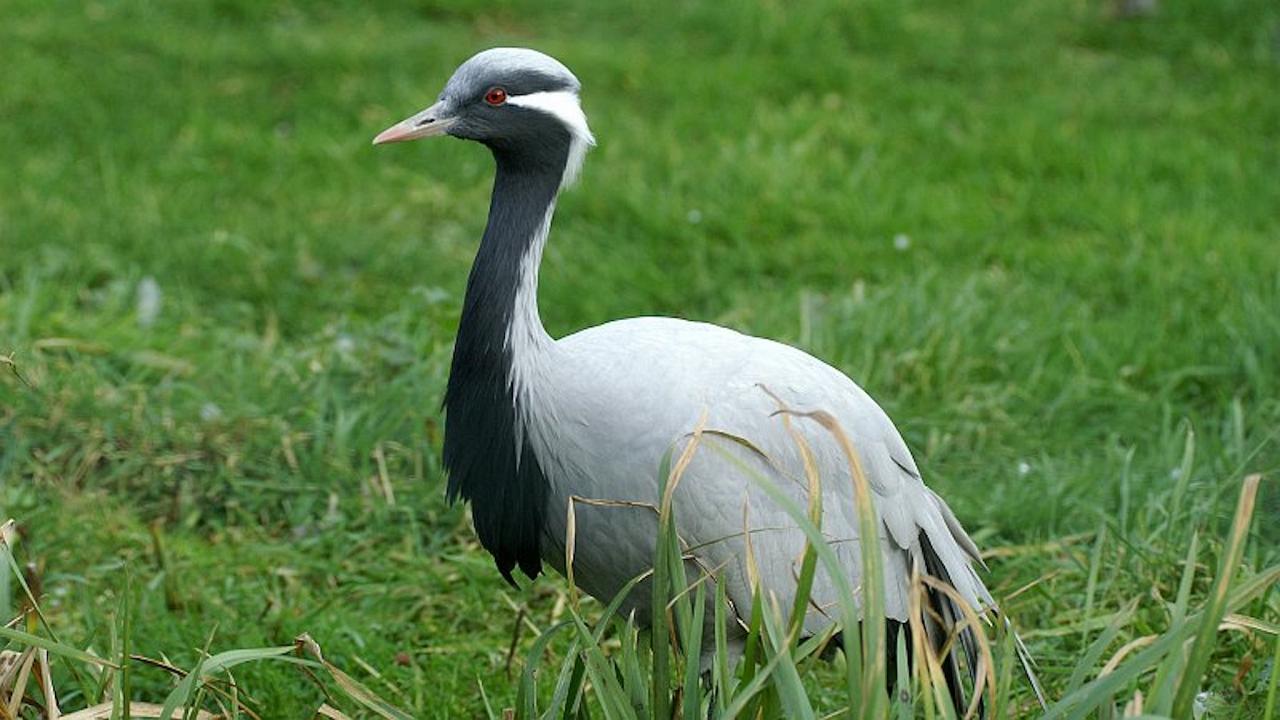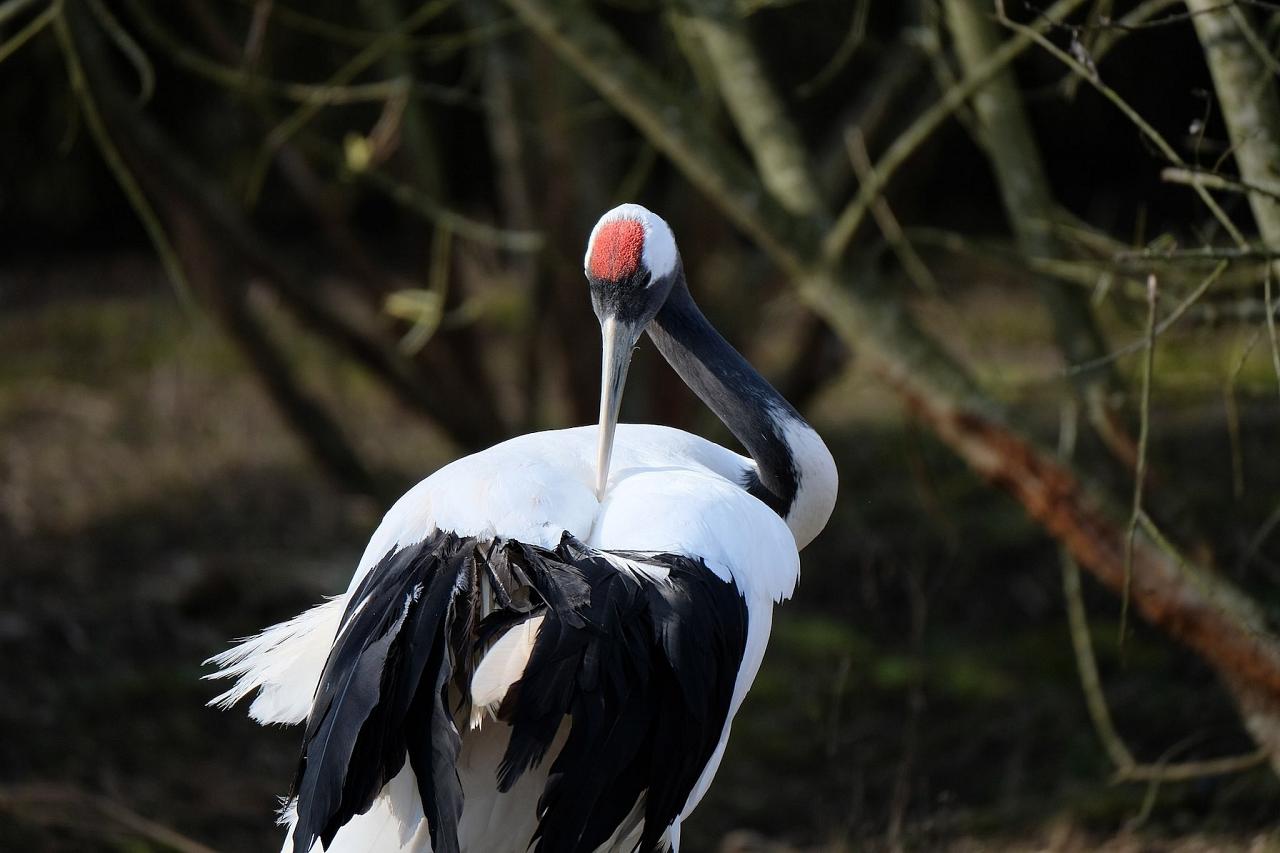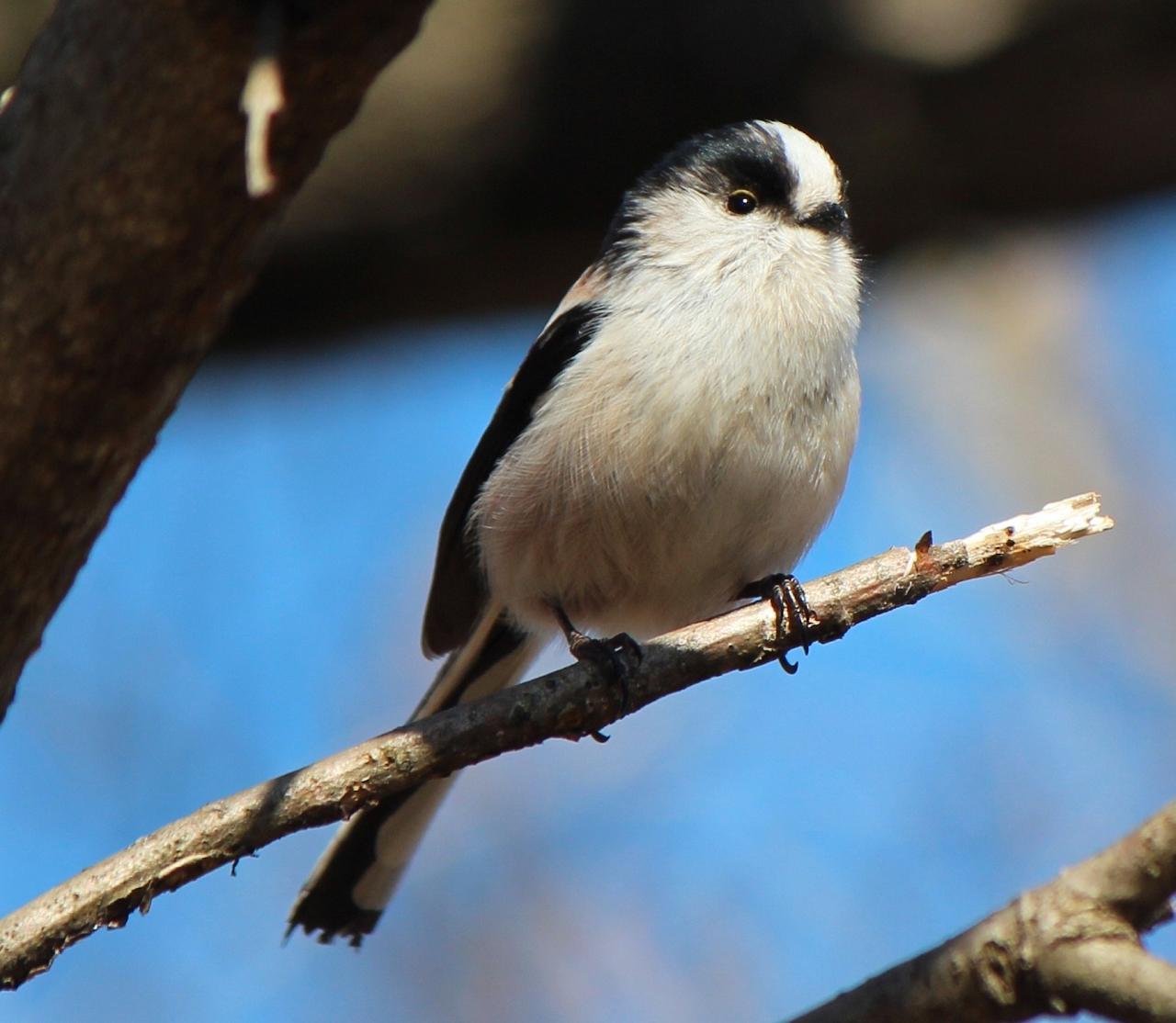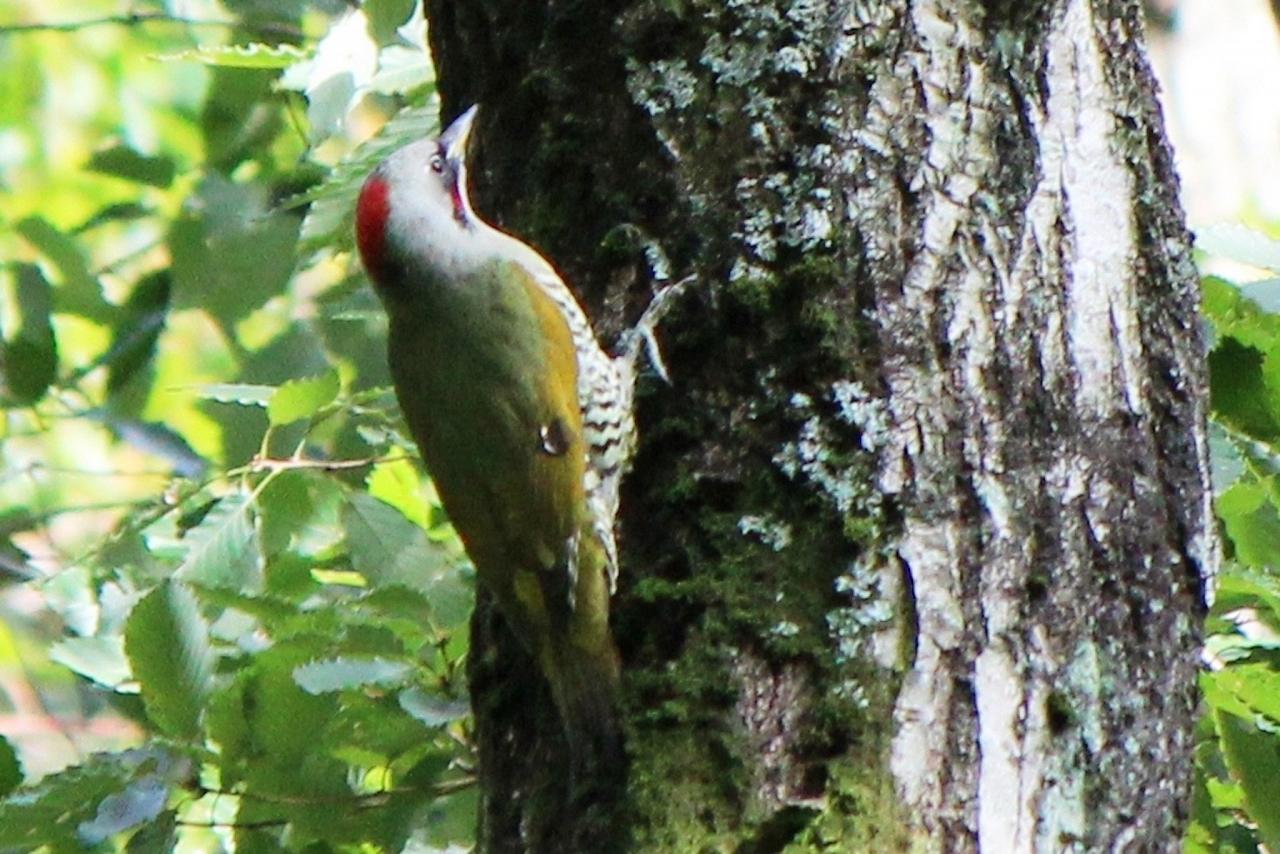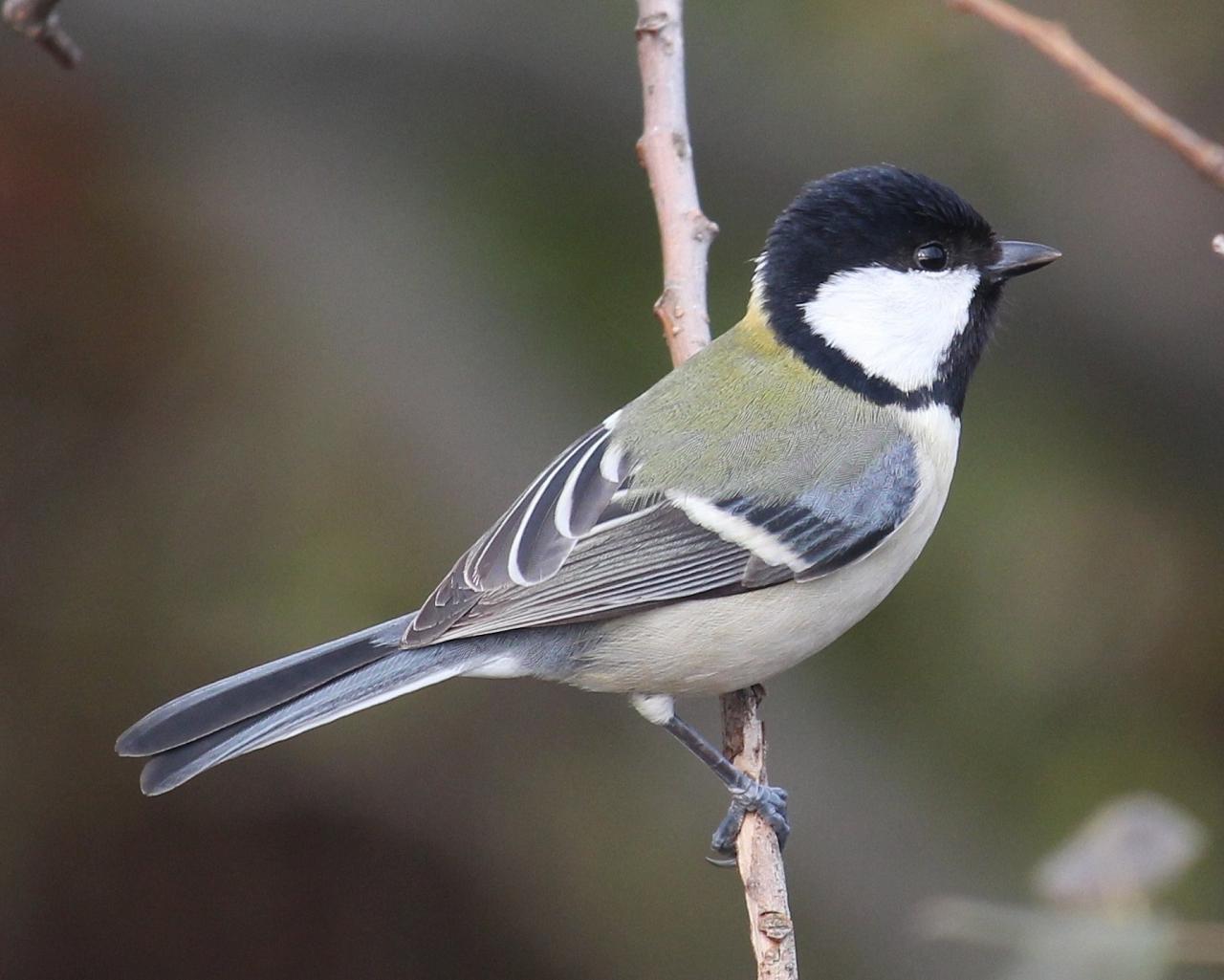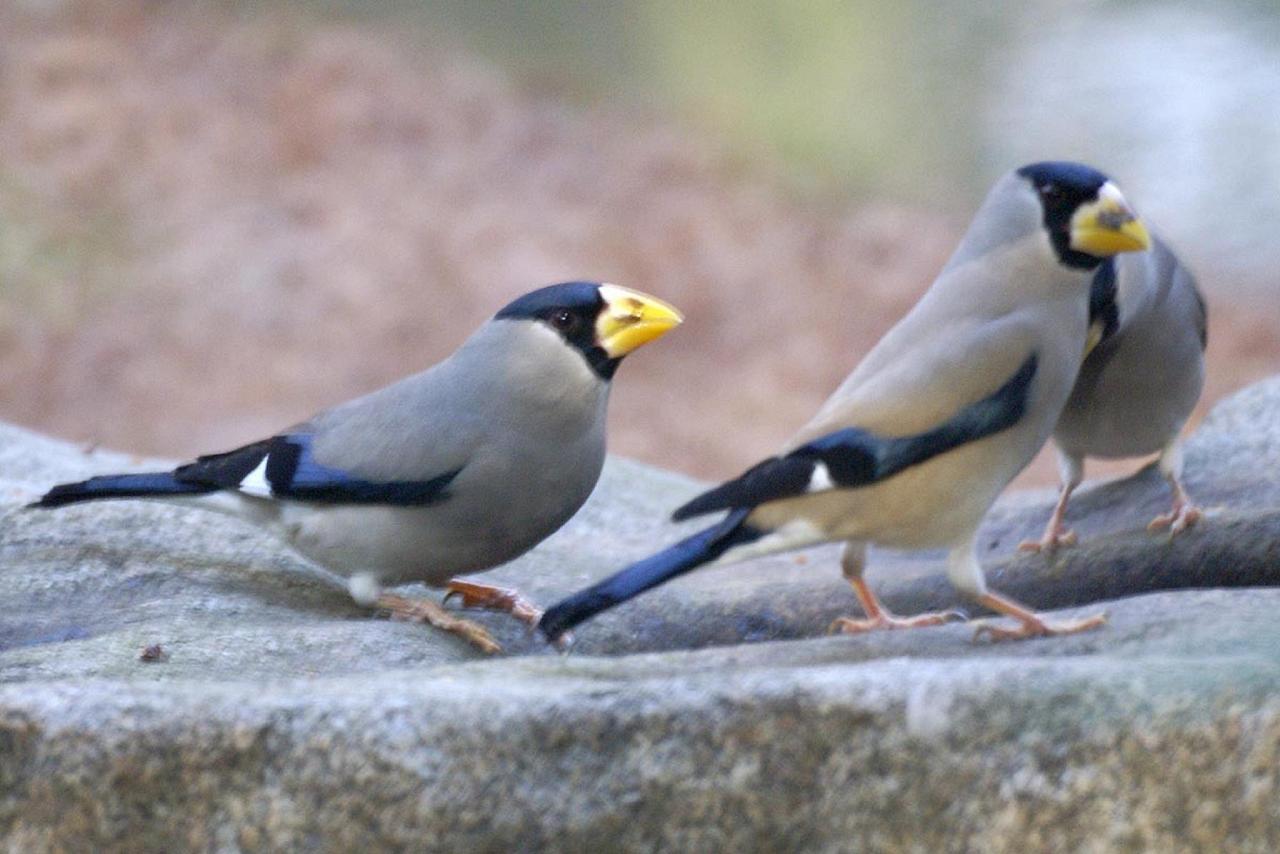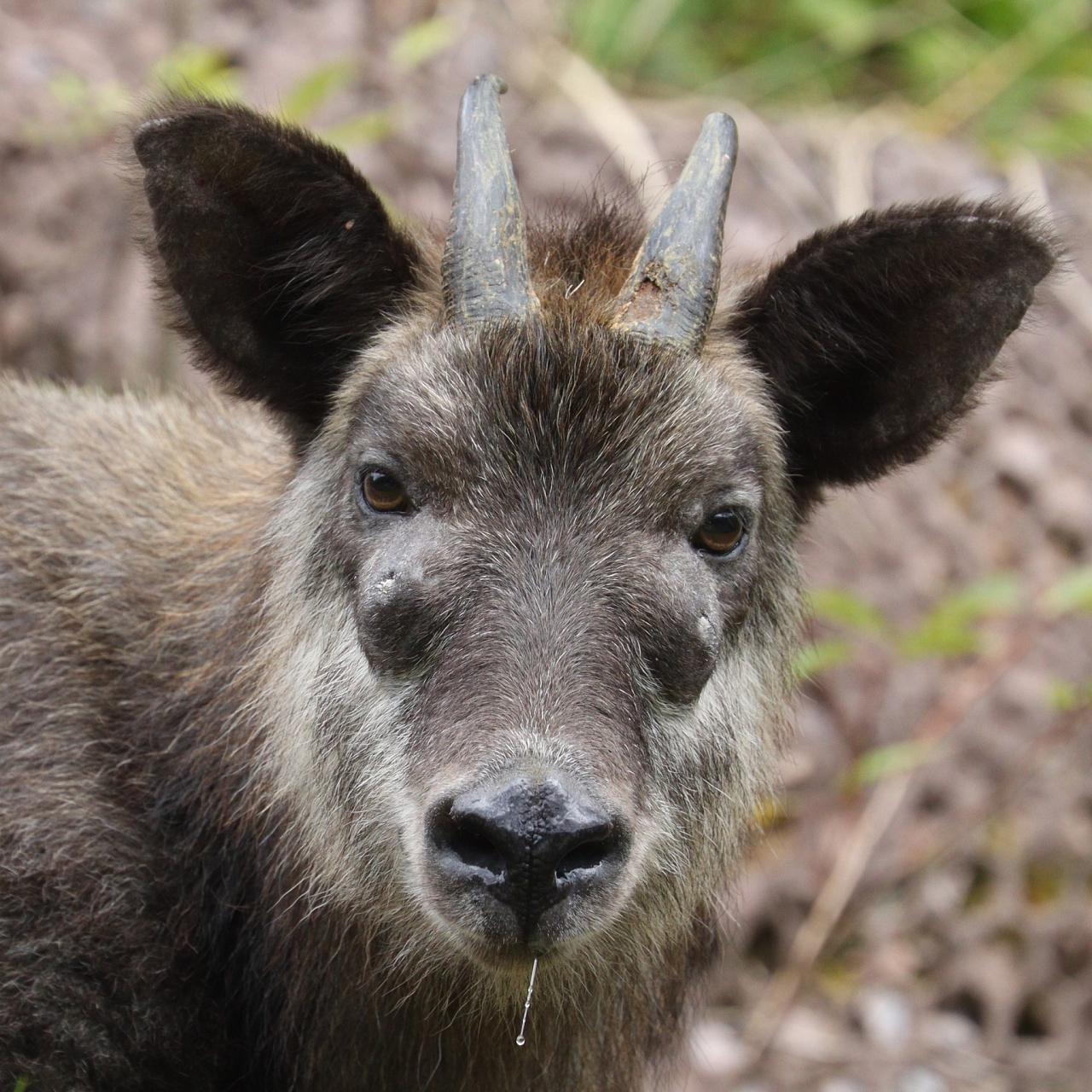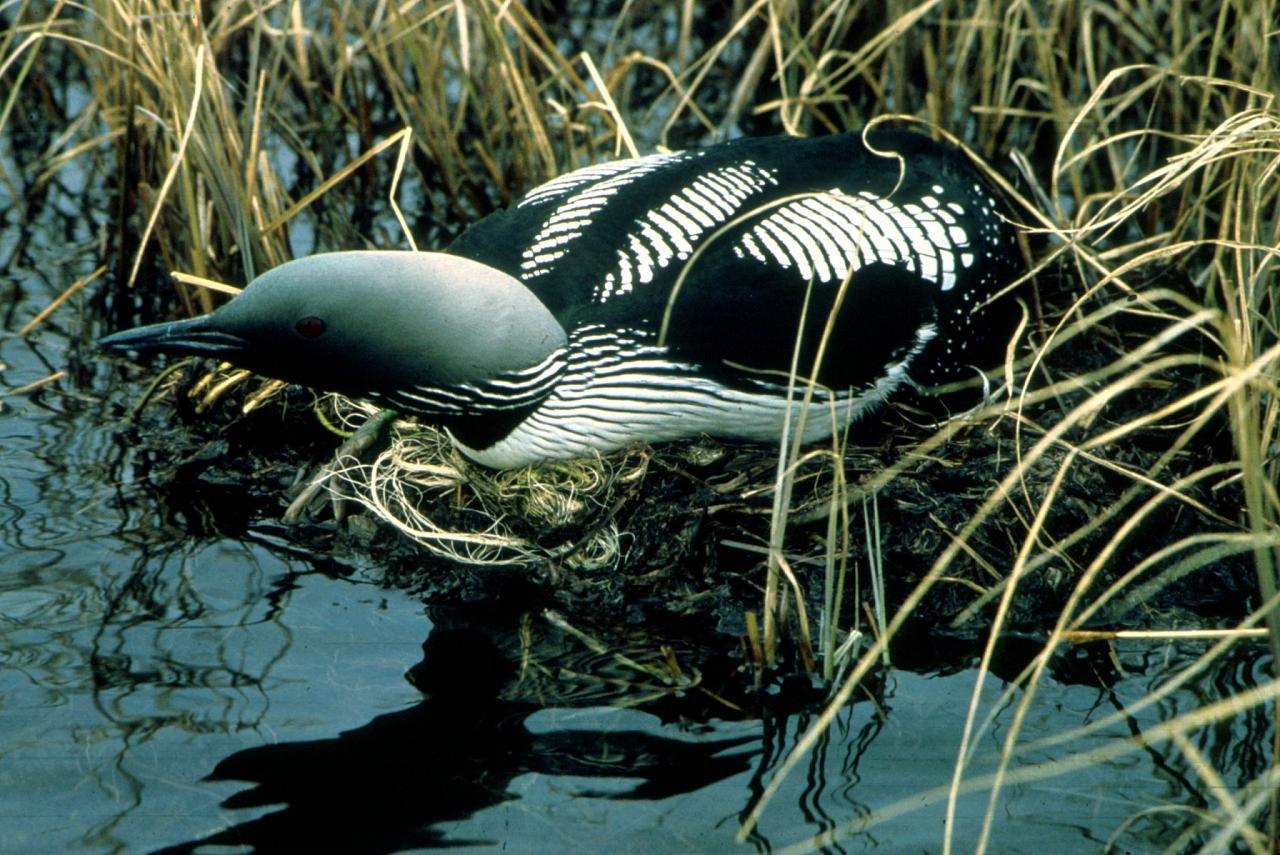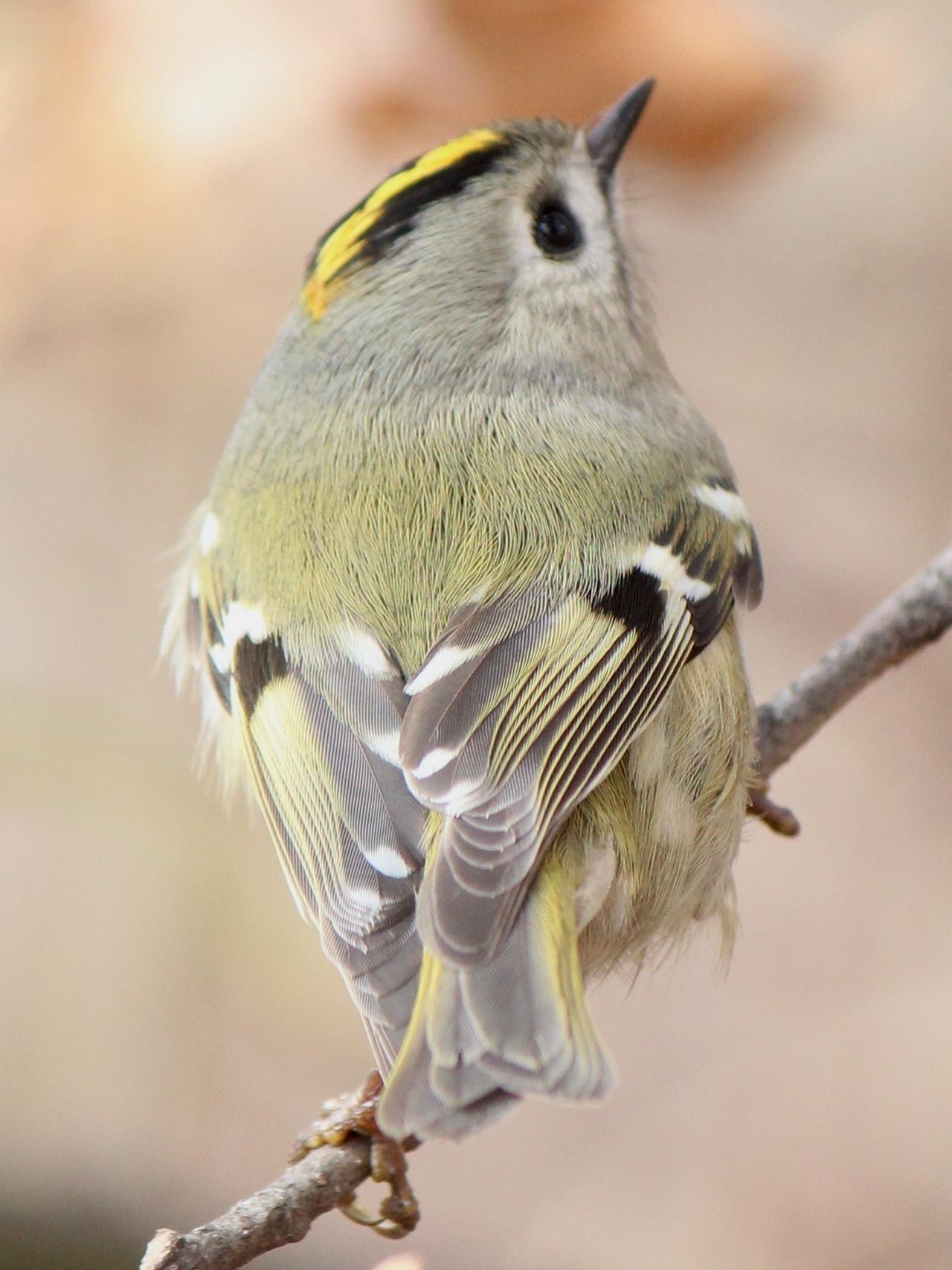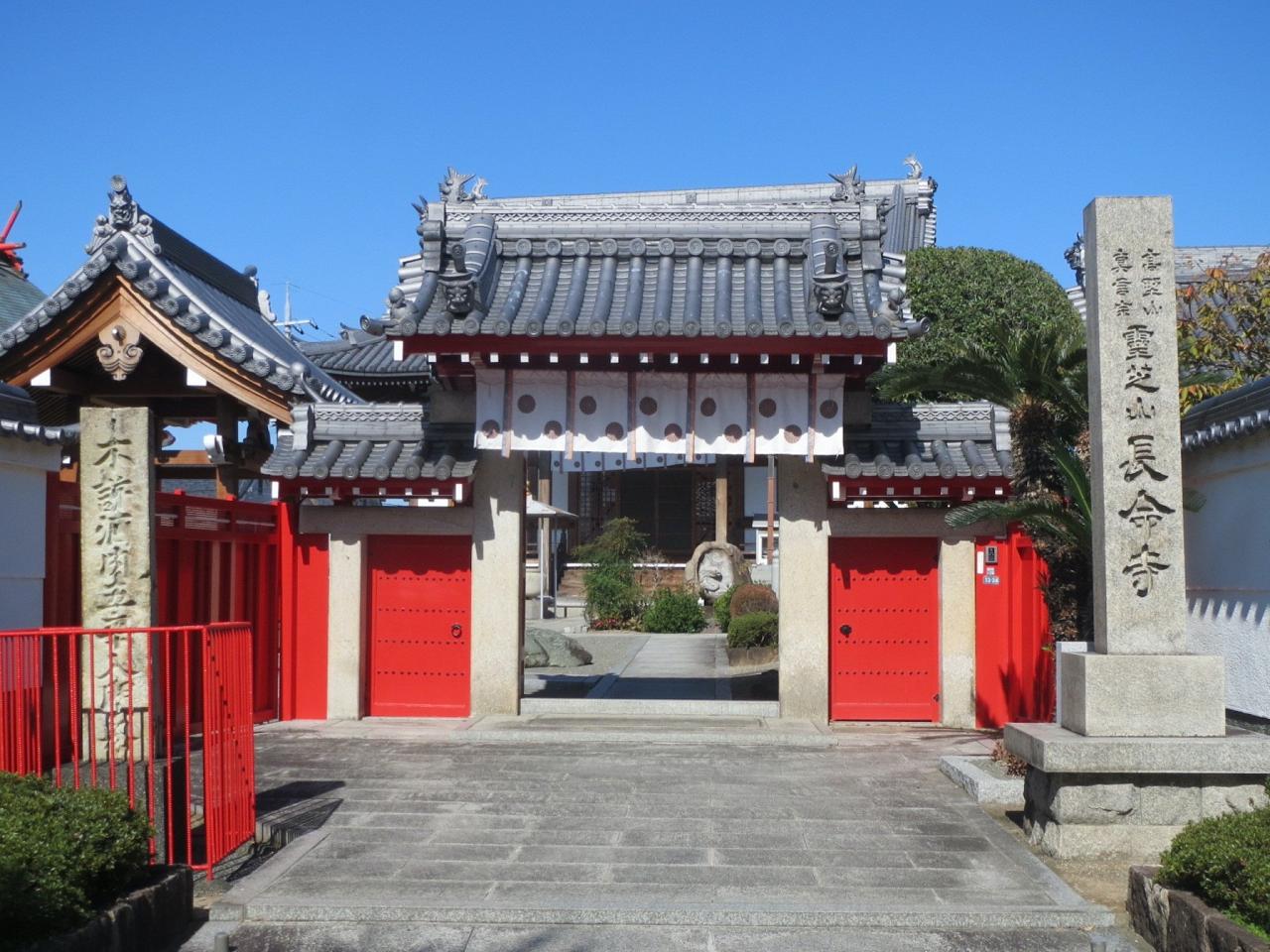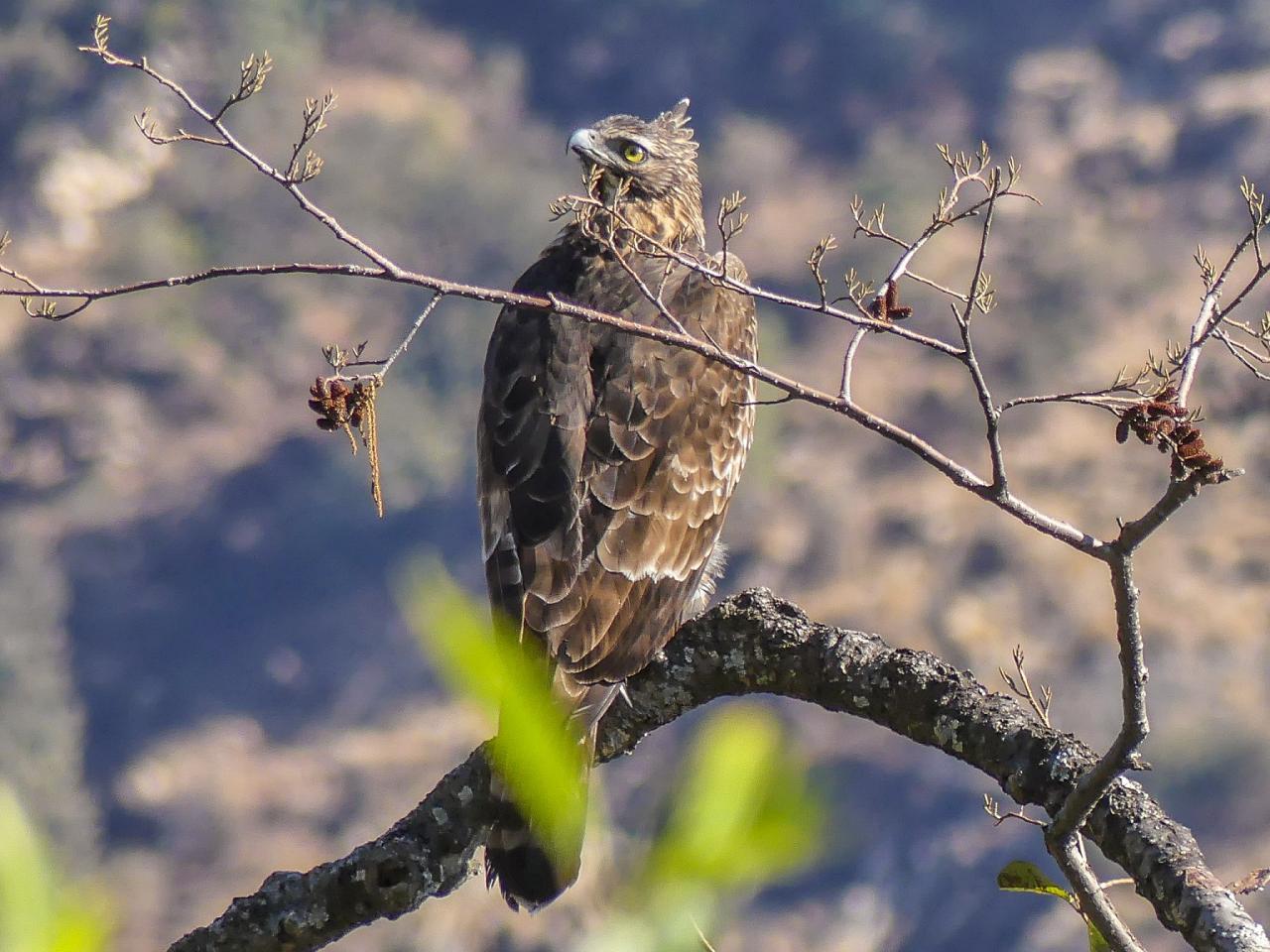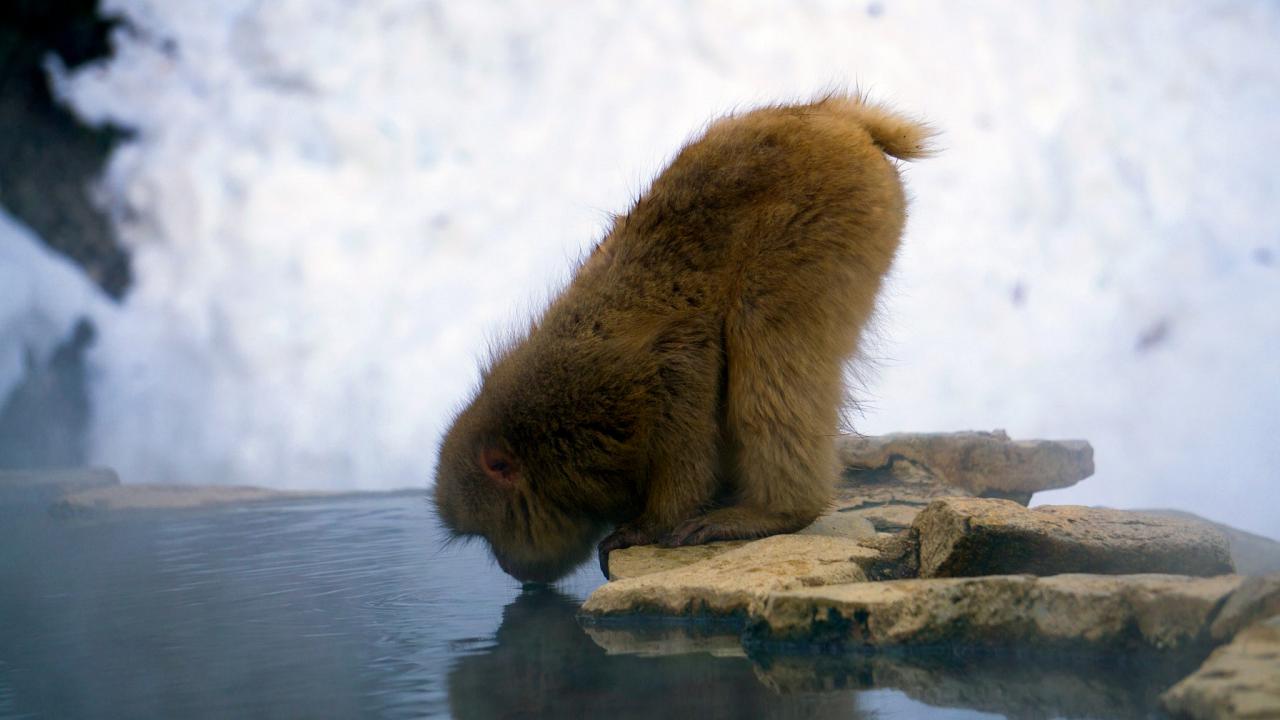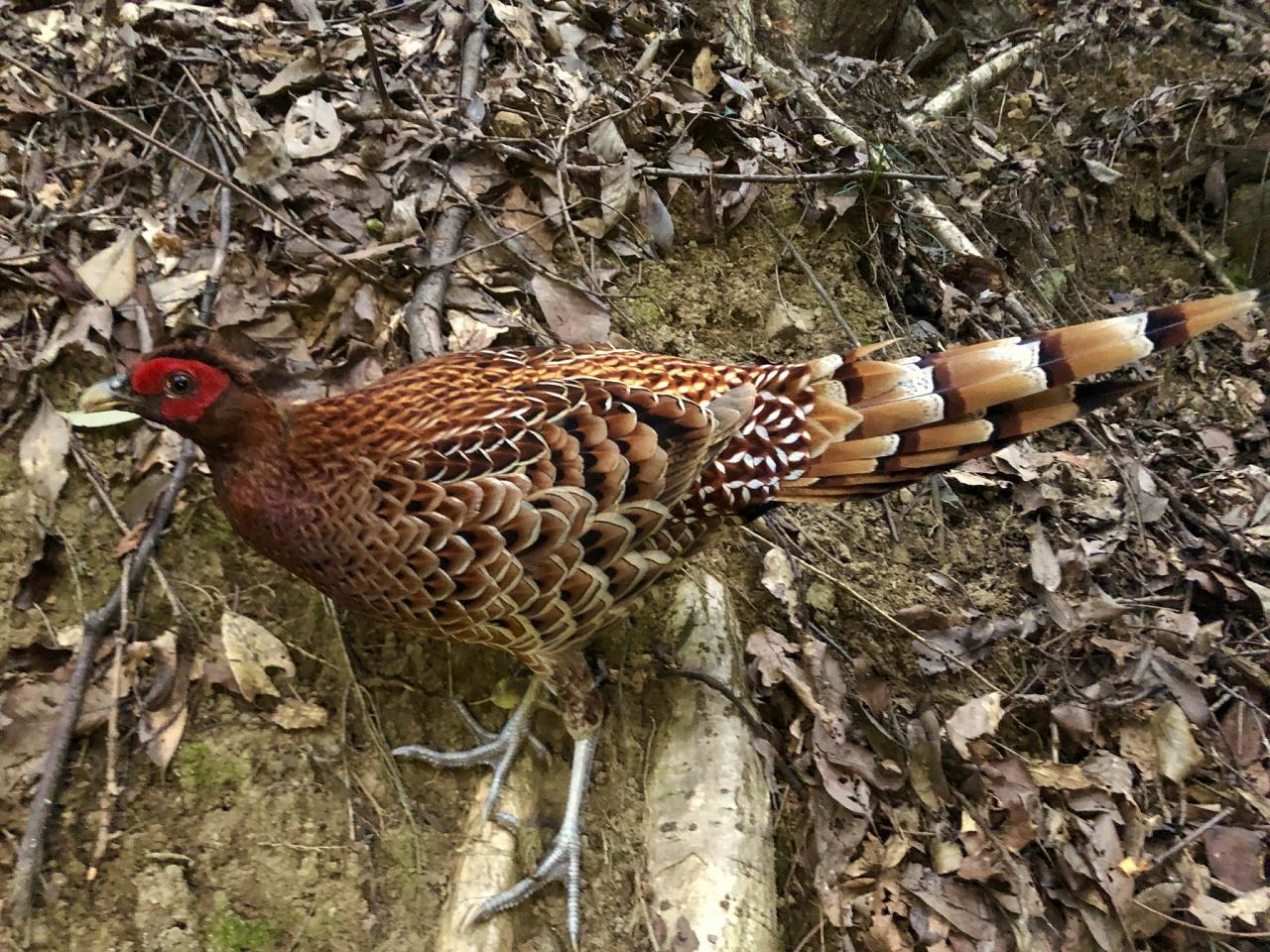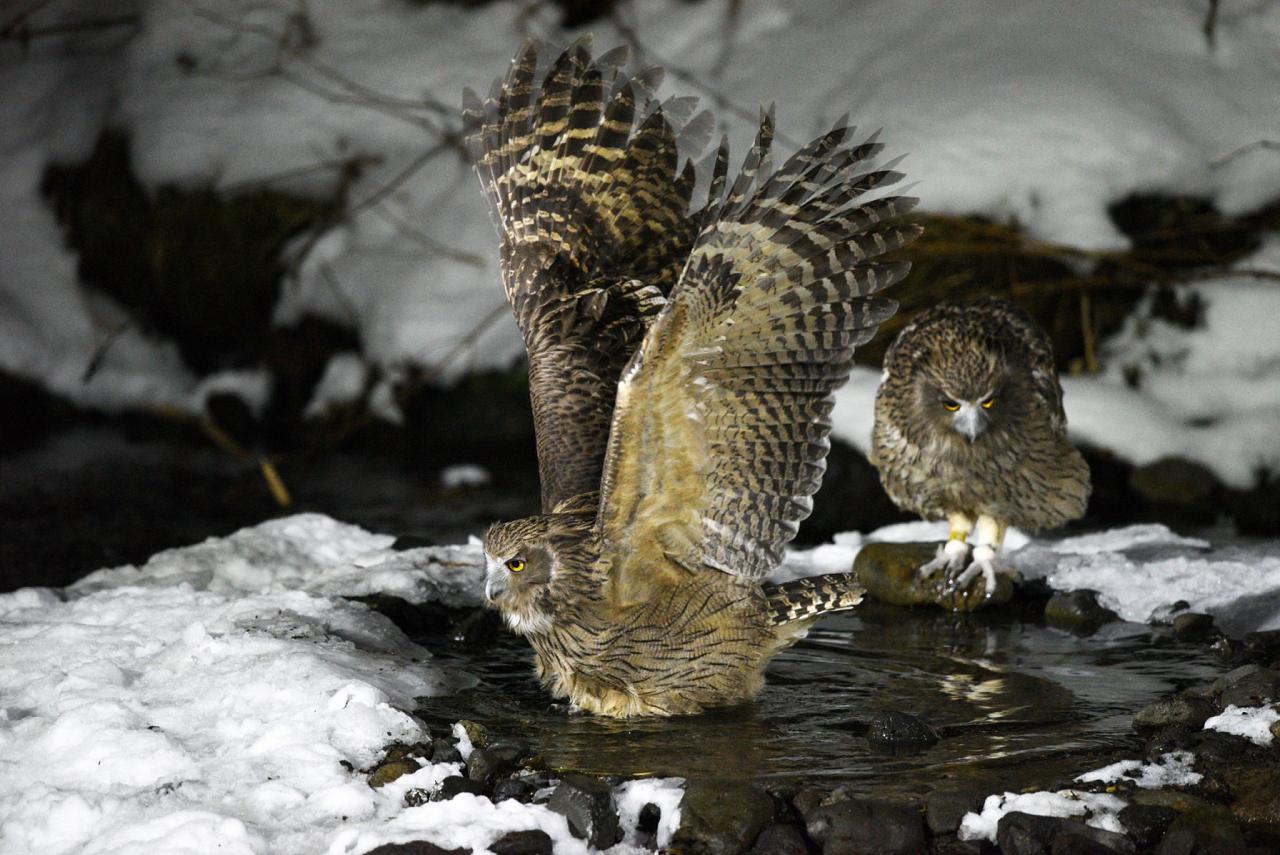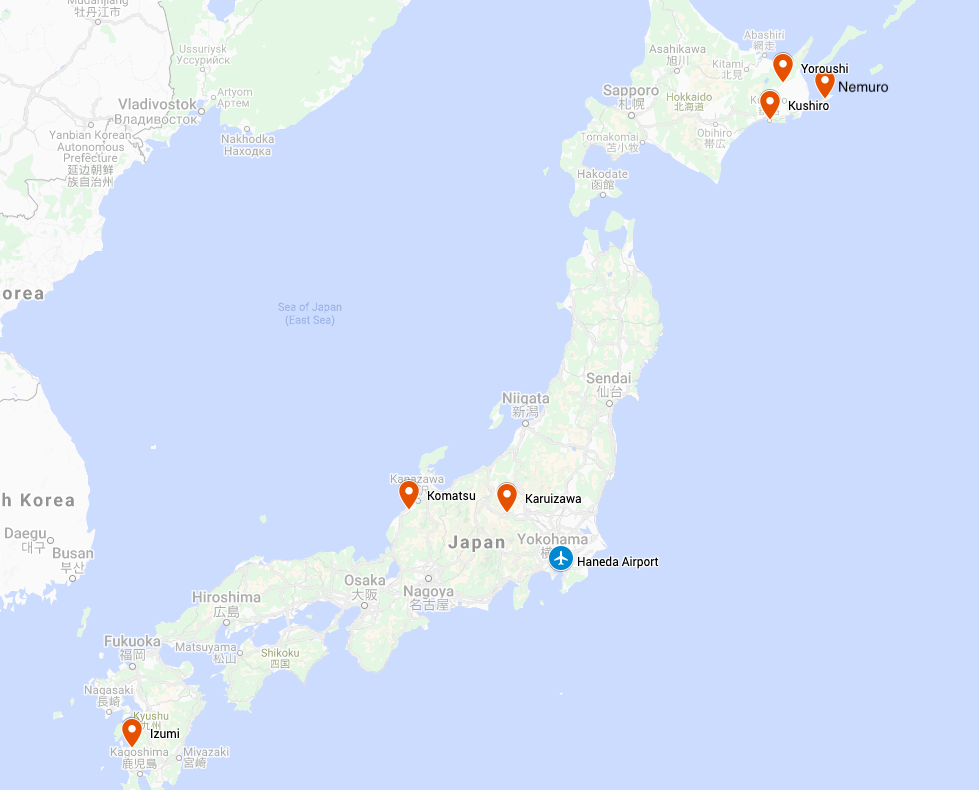- Overview
- Full Itinerary
- Photo Gallery
- Costing
- Travel Details
- Trip Reports
- Guide
- Map
- Know Before You Go
We’ve added two nights to set a good pace and not miss any of Japan’s amazing winter sightings. Japan offers a fantastic array of birding and nature opportunities—from the wintering cranes in Kagoshima to the world-famous Snow Monkeys in Jigokudani.
Marvel at massive flocks of waterfowl, working back and forth from the coast to the rice fields. Search for the range-restricted Saunders’s Gull, and hopefully spot endangered Black-faced Spoonbill. Enjoy the wonderful town of Karuizawa, with the possibility of getting good views of the endemic Copper Pheasant. Cruise among chunks of ice where Steller’s Sea Eagles feed. Explore the Shiretoko Peninsula in search of Asian Rosy-Finch and Snow Bunting.
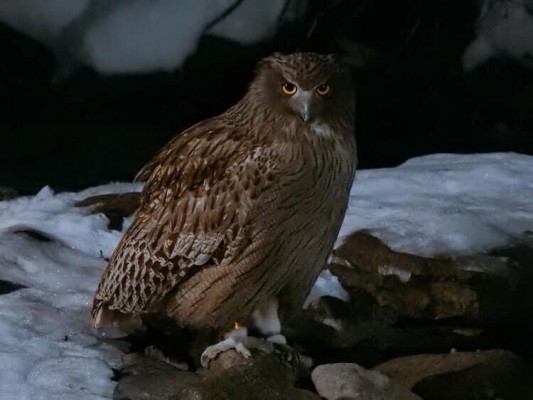
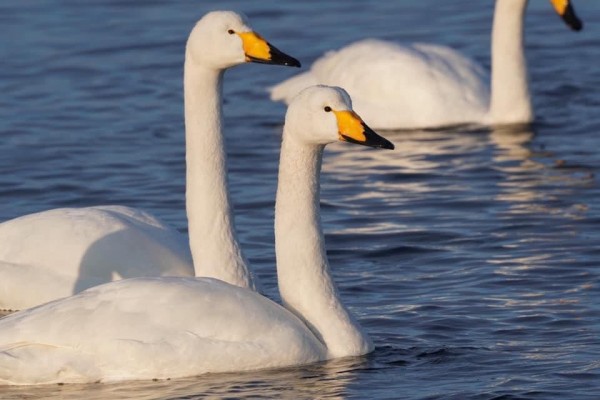
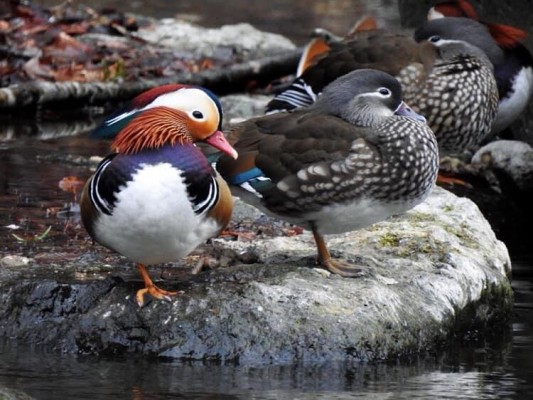
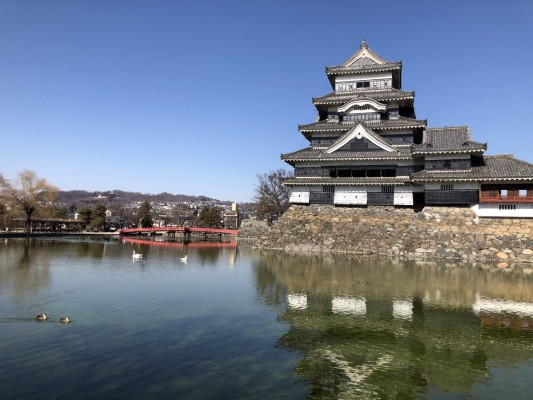
- “A good mix of nature and culture…Great that Bryan could explain the intricacies of Japanese life to us-would be difficult to negotiate without bilingual guides. Bryan made each person feel like he/she was his main focus. Really appreciated he and Koichi helping to make our son's trip special (the only one in the group below 40).” — Doris Gertler, 2023 Traveler
- “Fantastic! I can't imagine a better itinerary for winter. The landscapes were breathtaking: volcanoes, fallow fields, rolling with snow-covered forests, running Red Foxes, and
- crazy deer. Highlights: Blakiston’s Fish-Owl, ‘We can see Russia from here’ seabirds, including Red-faced Cormorant, and Sunrise with Red-crowned Cranes. Go-go-go...rigorous, but worth it.” — Katherine Regester, 2023 Traveler
- “It would be hard to say enough good things about Bryan Shirley. He knows his birds and where to find them; he takes good care of his group members; he makes sure that everyone has seen the bird; he's friendly with the group and with the locals; and his knowledge of Japanese is extensive.” — Daphne Byron, 2023 Traveler
- "One of the trips of a lifetime. Amazing scenery, birds and adventures." — Gene Muller, 2024 Traveler
Tour Highlights
- Discover Japan and all the wonderful winter birding on offer
- Marvel at over 15,000 cranes at the Crane Observation center in Izumi
- Enjoy the world-famous Snow Monkeys bathing in the hot springs of Jigokudani
- Explore historic Japanese sites such as the Zenkoji Temple, founded in the 7th Century
- Stay two nights at a stunning mountain inn, where Blakiston’s Fish-Owl comes to fish at night
- Watch for the once-near extinct, Red-crowned Cranes in Hokkaido
- Search the low-mountains for Japanese Woodpecker and Mountain Hawk-Eagle
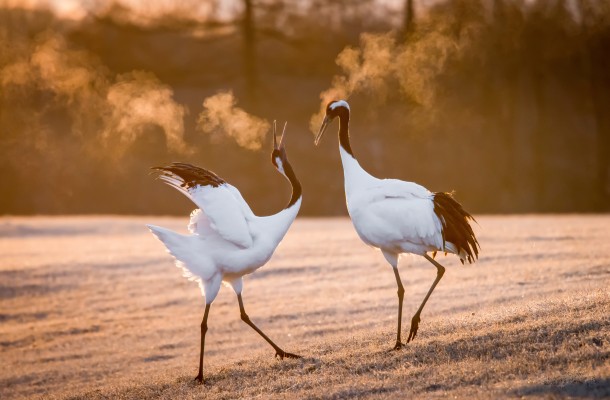

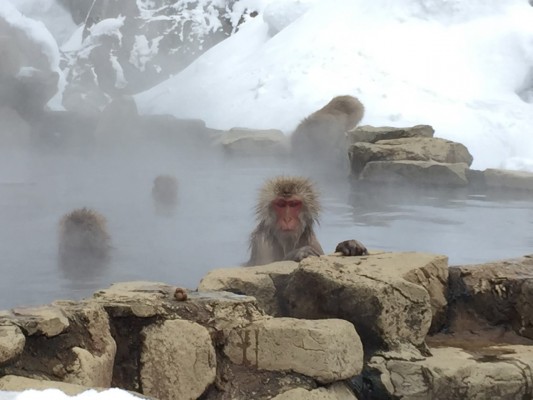
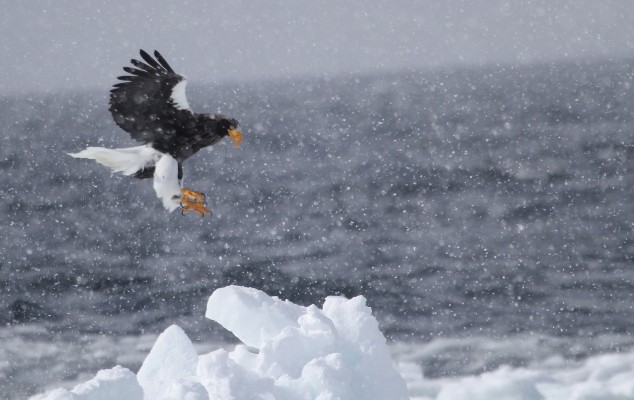
Trip Itinerary
Itineraries are guidelines; variations in itinerary may occur to account for weather, road conditions, closures, etc. and to maximize your experience.
Wed., Jan. 7 Arrivals
Welcome to Japan! We start our tour on a Sunday to give you the weekend to travel into Tokyo. Tokyo has two international airports; we have planned this first night near Haneda Airport (HND) with an easy airport hotel. We officially kick off our trip with a welcome dinner tonight.
Please ask your Naturalist Journeys travel specialist to connect you with our travel agent, who is happy to help you book your flight. We pay her ticketing fee.
Accommodations at the Metropolitan Tokyo Haneda (D)
Thurs., Jan. 8 Morning Birding | Kagoshima | Izumi
This morning we take a short walk near the hotel for an intro to some of the more common bird species in the Tokyo area. Brown-eared Bulbul and White-cheeked Starling are common in the city, and we may see our first Dusky Thrush—a common winter visitor. Depending on the time of our flight to Kagoshima, we may visit a nearby river where we are likely to see Common Pochard, Eurasian Green-winged Teal, Eurasian Wigeon, Great Cormorant, and more. If the day is clear, we may get a view of Mt. Fuji. We then return to the airport for our flight to Kagoshima.
Kagoshima is located at the southern tip of the island of Kyushu. It’s far enough south that even in the middle of winter the weather is normally pleasant, with highs in the mid-50s (but still occasionally gets snow). We stay in the small city of Izumi, about a two-hour drive from Kagoshima. Izumi is famous for the Crane Observation Center and the 15,000 cranes that spend the winter here. The majority are Hooded and White-naped Cranes, but there are always a few other species in the area, possibly including Common, Siberian, Sandhill (from the population that breeds in eastern Siberia), and Demoiselle. In addition to the cranes, there are a huge number of other birds that winter here. Witness massive flocks of waterfowl work back and forth from the coast and the same rice fields the cranes are using. Brush and reeds along the rivers hold Reed, Rustic, Chestnut-eared, and Ochre-rumped Buntings, and we work for Chinese Penduline-Tit. Of course, there are many other regular winter species, as well as some great rarities, making it a really exciting area to bird.
Accommodations at the Hotel R9 Izumi (B,L,D)
Fri., Jan. 9 & Sat., Jan. 10 Izumi Crane Center | Local Fields & Wetlands
This is our best birding area on this tour, so we have included plenty of time here to make sure we cover the area well. There are a few other areas nearby that we visit to get more variety in both habitats and species. A short drive from the hotel and we are in the low mountains where we can see Varied, Japanese, and Long-tailed Tits; Pygmy, White-backed, and Japanese Woodpeckers; and Mountain Hawk-Eagle are often soaring nearby. Additionally, we search along some of the rocky rivers for Long-billed Plover, and at a beautiful mountain lake, Mandarin Duck.
One morning we drive north to visit some of the most productive mudflats in Japan for shorebirds and gulls. One of the highlights is the range restricted Saunders’s Gull (among many other species of gulls such as Black-headed, Black-tailed Herring, and Slaty-backed), but some winters there are a few endangered, Black-faced Spoonbill in the area among the other waders.
We also make time to soak in the traditional Japanese architecture and local sites—Izumi-Fumoto is a beautifully well-preserved Samurai residence with historic items surrounded in leafy gardens. And we would be remiss not to indulge in the delicious local foods.
Accommodations at the Hotel R9 Izumi (B,L,D)
Sun., Jan. 11 Morning Birding | Flight to Komatsu
Today we leave Izumi on a flight from Kagoshima. We take our time and bird our way to Fukuoka before catching our flight to Komatsu on the island of Honshu.
Accommodations in Komatsu (B,L,D)
Mon., Jan. 12 Komatsu
Komatsu is a relatively small city on the Sea of Japan side of Honshu. It has a well-deserved reputation for being cold and snowy, but that weather brings with it lots of waterfowl. Along with the more familiar species like Mallard and Northern Pintail, we should be able to find some specialties like Eastern Spot-billed Duck, Falcated Duck, Smew, and of course the gorgeous Baikal Teal. We visit a couple of wetland sites, one with an impressive visitor center and scopes set up to view the waterfowl. The rocky coastline is good for Red-throated, Arctic, and Pacific Loons, sea ducks, and Great and Japanese Cormorants.
Accommodations in Komatsu (B,L,D)
Tues., Jan. 13 Kanazawa Kenrokuen Japanese Garden | Ride the Bullet Train!
Japanese Gardens hold their beauty year-round, and today we enjoy visiting the Kanazawa Kenrokuen gardens. This landscape garden is often listed as one of the top three in Japan, dating from 1871. Our walk through reveals many elements of the garden layout and of course, we keep our binoculars handy for birds that appreciate the green oasis too.
In the afternoon we have our first view of the Japanese Alps as we head into Nagano Prefecture. Our destination is the town of Nakano and we get there via the Bullet Train! Our hotel for the night is a short walk from the station and we dine at a favorite local restaurant.
Accommodations in Nakano (B,L,D)
Wed., Jan. 14 Jigokudani Snow Monkeys | Zenkoji Temple | Karuizawa
Today is a bit less birding but still a very exciting day. We start with the world famous “Snow Monkeys” of Jigokudani. The Snow Monkeys, or Japanese Macaques, overcome the frigid winters of the Japanese Alps by hanging out in the natural hot springs of Jigokudani (meaning Hell’s Canyon). We have a hike of about a mile and often see mixed flocks of Coal, Varied, Willow, and Japanese Tits, and Goldcrest and Eurasian Siskin on the walk into the canyon. While we enjoy the antics of the Snow Monkeys, we also scan the steep canyon for another exciting mammal—the Japanese Serow (a goat-antelope). In the afternoon we visit one of the most important and popular Buddhist sites in Japan—Zenkoji Temple (founded in the 7th Century).
Accommodations in Nakano (B,L,D)
Thurs., Jan. 15 Karuizawa
This morning we head out early for Karuizawa, a beautiful resort town for people from Tokyo to escape the city. In the winter they come to ski, ice skate, and enjoy the hot springs (Onsen). Birders come here for the chance at what is probably the most difficult bird of the trip—the endemic Copper Pheasant. This gorgeous bird is fairly common in the mountains around Karuizawa but can be extremely difficult to find. Depending on the snow levels, they sometimes forage along roadsides where the snow is less deep. The last few years there has not been as much snow so we normally end up doing some hikes through the forest at beautiful regional park with excellent trails. Other birds of interest here include Japanese Woodpecker, Japanese Grosbeak, Japanese Accentor, Japanese Waxwing, and others.
Accommodations in Karuizawa (B,L,D)
Fri., Jan. 16 Matsumoto Castle | Karuizawa
After a bit of early morning birding today we visit another cultural site: Matsumoto Castle, one of the most beautiful and well-known castles in Japan. While primarily a cultural day, the castle is surround by a series of moats that hold a good assortment of waterfowl and the gardens are home to Dusky Thrush and other passerine species. We spend some time exploring the grounds and touring the castle and exhibits inside. As we travel back to our hotel for the night we stop and bird at a couple of spots looking for any key species that we have yet to encounter.
Accommodations in Karuizawa (B,L,D)
Sat., Jan. 17 Karuizawa | Return to Tokyo
This morning we make our way back to Tokyo, stopping at several local parks that have lakes and wetlands where in some years, we have found rare Oriental Stork. Today we wrap up the Honshu portion of our trip. We have the day to visit birding hotspots and our lodgings are back at the Haneda Airport to position for an early flight to Kushiro, Hokkaido the following day
Accommodations in Tokyo at the Haneda Airport (B,L,D)
Sun., Jan. 18 Kushiro | Red-crowned Cranes | Yoroushi Onsen
This morning we take the earliest flight available to the northernmost island in Japan—Hokkaido. Winter is in full force here and while most birds move much further south, there are some wonderful species that we search for here and it is often the highlight of the trip for many participants. Our first stop is for Red-crowned Cranes. Once almost extinct in Japan, they have made a great recovery and are now common. In the winter most of the cranes are concentrated into a couple of areas where they are fed by locals, so we are guaranteed great views of these magnificent birds.
Once we’ve spent plenty of time with the cranes, we enjoy a local café with feeders where songbirds come in for close-up views, including the delightful “Snow Fairy”, a light-headed form of Long-tailed Tit found here. We stay close to the crane area this evening, perhaps taking in views from a bridge where they come in to roost.
Mon., Jan. 19 Yoroushi Onsen | Blakiston’s Fish-Owl
After some dawn time with the cranes (optional), we head north to the top lodge of our trip for the next two nights. We stay at a traditional onsen (hot spring) resort. There are feeders that draw in the Hokkaido subspecies of Eurasian Jay and a variety of tits (Coal, Marsh, Willow, and Japanese) and woodpeckers (Pygmy, White-backed, and Great Spotted). The river often has Brown Dipper and, if we’re lucky, Solitary Snipe. But the highlight here is after dark, when Blakiston’s Fish-Owl (the largest living species of owl!) comes to the river or pond only a few feet from the lodge windows. You may even get lucky and see the owl while you enjoy an evening soak in the hot springs. Meals and hospitality are also key to this wonderful experience.
Accommodations in Yoroushi Onsen (B,L,D)
Tues., Jan. 20 Rausu | Shiretoko Peninsula | Yoroushi Onsen
After breakfast we drive north along the coast. Northeast Hokkaido holds a large population of wintering Steller’s Sea-Eagle and White-tailed Eagle. We drive north to Rauso, where we take a short cruise on which we have incredible views of them sitting on floating ice in the ocean (the ice is not always present so, if not, we watch them fly near the boat as well as from several viewpoints along the coast). Along the coast we also look for sea ducks (including Stejneger’s and Black Scoters and Long-tailed Duck), alcids (such as Pigeon and Spectacled Guillemot, Common, and Thick-billed Murre, and Ancient Murrelet), and loons while we admire the snow-covered mountains of the Shiretoko Peninsula. In the evening we return to the same lodge for another delightful evening and a second chance at Blakiston’s Fish-Owl.
Accommodations in Yoroushi Onsen (B,L,D)
Wed., Jan. 21 Southeast Hokkaido | Nemuro
This morning we bird around the lodge, looking for specialty birds along the snowy creek. We then work our way to the southeast corner of Hokkaido. We stop in a number of harbors as we head south, using our scopes to view eagles and seabirds. We may see Red Fox, and we should see good numbers of waterfowl including Harlequin Duck and swans. Passerines are scarce here in the winter, but we do keep our eyes open for Snow Bunting and Asian Rosy-Finch.
Accommodations in Nemuro (B,L,D)
Thurs., Jan. 22 Nemuro Peninsula
Today we have the whole day to explore the Nemuro Peninsula. Nemuro City has done a lot to welcome birdwatchers and we visit several blinds where we can get out of the cold while we scan the bays and shores. Watch for sea ducks, guillemots, murres and gulls, White-tailed Eagle and Steller’s Sea-Eagle, and more. The Kuril Islands, taken from Japan by Russia in World War II, are visible as we reach the tip of the peninsula. This is our best chance to spot several alcid species from two prominent lighthouse points as we explore. Enjoy a celebratory dinner tonight as we reminisce about our grand trip.
Accommodations in Nemuro (B,L,D)
Fri., Jan. 23 Southeast Hokkaido | Flight to Tokyo
All good things must come to an end, and this morning we make the drive back to Kushiro, as time allows hitting a couple of key locations for species we may still be missing. We arrive at the airport late morning for our flight back to Tokyo, arriving at Haneda airport typically by 2:00 PM. There are some international flights that leave Haneda from 5:00 PM onward; please check with us closer to departure if you’re booking before 8:00 PM so we can confirm our connecting flight. Please note that flights off of Hokkaido are subject to winter storms, fog, and flight delays, so you may want to build in a buffer day to your plans; we can book you an airport hotel if you wish (not included). (B,L)
Cost of the Journey
The cost of the tour is per person, based on occupancy: $7290* DBL / $8190*, from Tokyo. *Does not include required internal flights, estimated at $600. This tour requires internal flights that our operator will book for you using the Japan Air Pass system. To book them we need a copy of your passport and your international flights. We want to keep the group together so we hope to have air booked not later than the end of September 2025.
Cost of the Tour Includes: Accommodations for 16 nights, meals as specified in the itinerary (B=breakfast, L=lunch, D=dinner), park entrance and other activity fees for activities as described in the itinerary, professional guide services, pre-departure materials and miscellaneous program expenses. Cost does not Include: Round-trip airfare to and from Tokyo, Japan, or internal flights. It does not include items of a personal nature such as laundry, telephone, drinks from the bar; or gratuities for luggage handling or personal services.
Travel Details
Please plan to make air travel plans only after the minimum group size has been met. We will send you a confirmation email as soon as the trip has been confirmed.
Arrival and Departure Airport: Haneda Airport (HND) in Ota City, Japan
Arrival Details: Plan to arrive January 7, 2026 by 5:00 PM if you wish to join the group for dinner
Departure Details: January 23, 2026 after 8:00 PM as we have a flight back from Hokkaido in the afternoon.
Travel Tips: If you arrive early we suggest booking an early night at our first night tour hotel, Metropolitan Tokyo Haneda. You can book online and send us your confirmation number, with the goal being you won’t have to switch rooms. Most clients use a taxi and it is about $15-20. You can also take the monorail one stop to Tenkubashi station, there are airport staff available to assist you when purchasing a ticket.
If you would like to book a different hotel, there are many options and it’s best to work with your travel agent to find something that best suits your needs. If you’d like to explore Tokyo, there are an endless number of things to see! The Anamori Inari Shrine is located behind the Metropolitan Haneda and is an early 19th century Shinto shrine that has dozens of fox statues. Other shrines worth visiting are the Asakusa Shrine, the most famous in Tokyo, and the Meiji Jinjgu Shrine, dedicated to Emperor Meiji and also located in a park with good birding. If you’d like to visit botanical gardens, the Hamarikyu Gardens are nice to walk around and can be good for birding, even in winter. Do you prefer museums? The Sumida Hokusai Museum features exhibits on the life and art of Katsushika Hokusai, recognized as one of Japan’s greatest artists. The Edo Tokyo Museum has exhibits on the history of Tokyo. The Tokyo National Museum is the oldest in Japan and has the largest collection of important cultural artifacts. And finally, if you really want to get an early start on your birding list, head over to Tokyo Port Wild Bird Park, a nature preserve next to Tokyo Bay.
Entry Requirements: See "Essential Information" section under the "Know Before You Go" tab.
Browse below for trip reports and species lists from past versions of this and other tours from this destination.
Japan
- January 2023
- December 2023
- January 2024
- June 2024 (Hokkaido)
- January 2025
- May 2025
-
Bryan Shirley
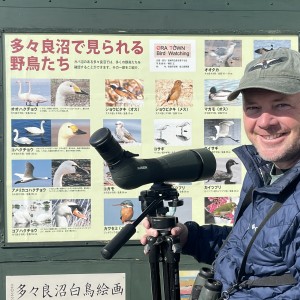
Bryan Shirley graduated from the University of Kentucky with a degree in Japanese/International Economics. He lived in Japan for 3 years when he was 20 and fell in love with the language and culture and has been guiding and birding there ever since. Besides guiding in Japan, he regularly leads tours for Japanese birding groups around the US and other countries. When not guiding he has been involved with various DWR and USFWS projects such as relocating Sage Grouse, breeding bird surveys, and bird-related projects for private environmental consulting firms. He also has volunteered his time to serve as president of Utah County Birders and organizes the annual Audubon Christmas Bird Counts for Provo and Payson, Utah where he currently resides. He currently is a member of the Utah Bird Records Committee.
Other trips with Bryan Shirley
-
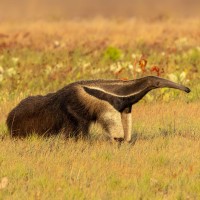 Guyana: Unspoiled WildernessFebruary 12 - 24, 2026
Guyana: Unspoiled WildernessFebruary 12 - 24, 2026 -
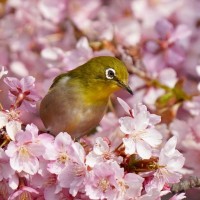 Spring in Japan: The Southern Islands FULL - Check out Island of Wonder: Birds & Nature of Sri Lanka!April 1 - 14, 2026
Spring in Japan: The Southern Islands FULL - Check out Island of Wonder: Birds & Nature of Sri Lanka!April 1 - 14, 2026 -
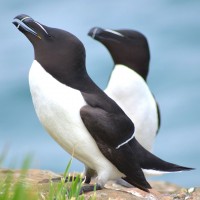 Iceland Birding & Nature FULL - See our Austria & Hungary tour!June 6 - 16, 2026
Iceland Birding & Nature FULL - See our Austria & Hungary tour!June 6 - 16, 2026 -
 Northern Tanzania: Wildlife & Birding Safari Only two spaces left!November 7 - 18, 2026, w/Nairobi & Amboseli National Parks extension
Northern Tanzania: Wildlife & Birding Safari Only two spaces left!November 7 - 18, 2026, w/Nairobi & Amboseli National Parks extension -
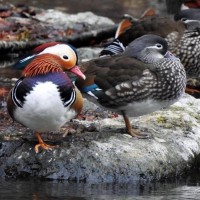 Japan Birding & Nature FULL - Check out Japan in December 2027!January 7 - 23, 2027
Japan Birding & Nature FULL - Check out Japan in December 2027!January 7 - 23, 2027 -
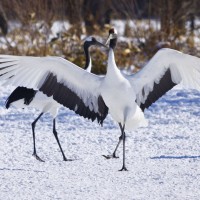 Japan Birding & Nature December 1 - 17, 2027
Japan Birding & Nature December 1 - 17, 2027 -
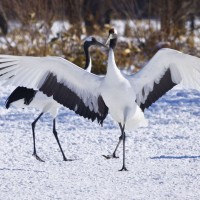 Japan Birding & Nature January 7 - 23, 2028
Japan Birding & Nature January 7 - 23, 2028
-
Essential Information +
Pace & Protocols +
Packing List +
Suggested Reading List +
Useful Links +
Photo credits: Banners: Snow Monkey, Photo by Steven Diaz on Unsplash; Urai Owl, Bryan Shirley; Red-crowned Cranes, Bryan Shirley; Jigokudani by Sugerman Joe on Unsplash; Balkal Teal by Pallav Pranjal via Creative Commons; Smew by Matti Virtalavia Creative Commons; Japanese Pygmy Woodpecker by Greg Peterson via Creative Commons; Reed Bunting by Ken Billington via Creative Commons; Chinese Penduline-tit by Jerry Gunner via Creative Commons. Thumbnails: Blakiston's Fish-Owl, Bryan Shirley; Swans, Bryan Shirley, Mandarin Duck, Bryan Shirley; Matsumoto Castle, by Markus Winkler on Unsplash; Cranes, via Unsplash; Sakura-jima volcano, from Kagoshima hills, by Amandine P. on Unsplash; Snow Monkeys, via Unsplash; Steller's Sea Eagle, Bryan Shirley; Eastern Spot-billed Duck, Katsura Miyamoto via Flickr; Mandarin Duck, by Isaac Chou on Unsplash; Snow Monkey, Steven Diaz on Unsplash; Black-faced Spoonbill, Bernard Spragg via Flickr; Dusky Thrush by Harum Koh on Flickr.










